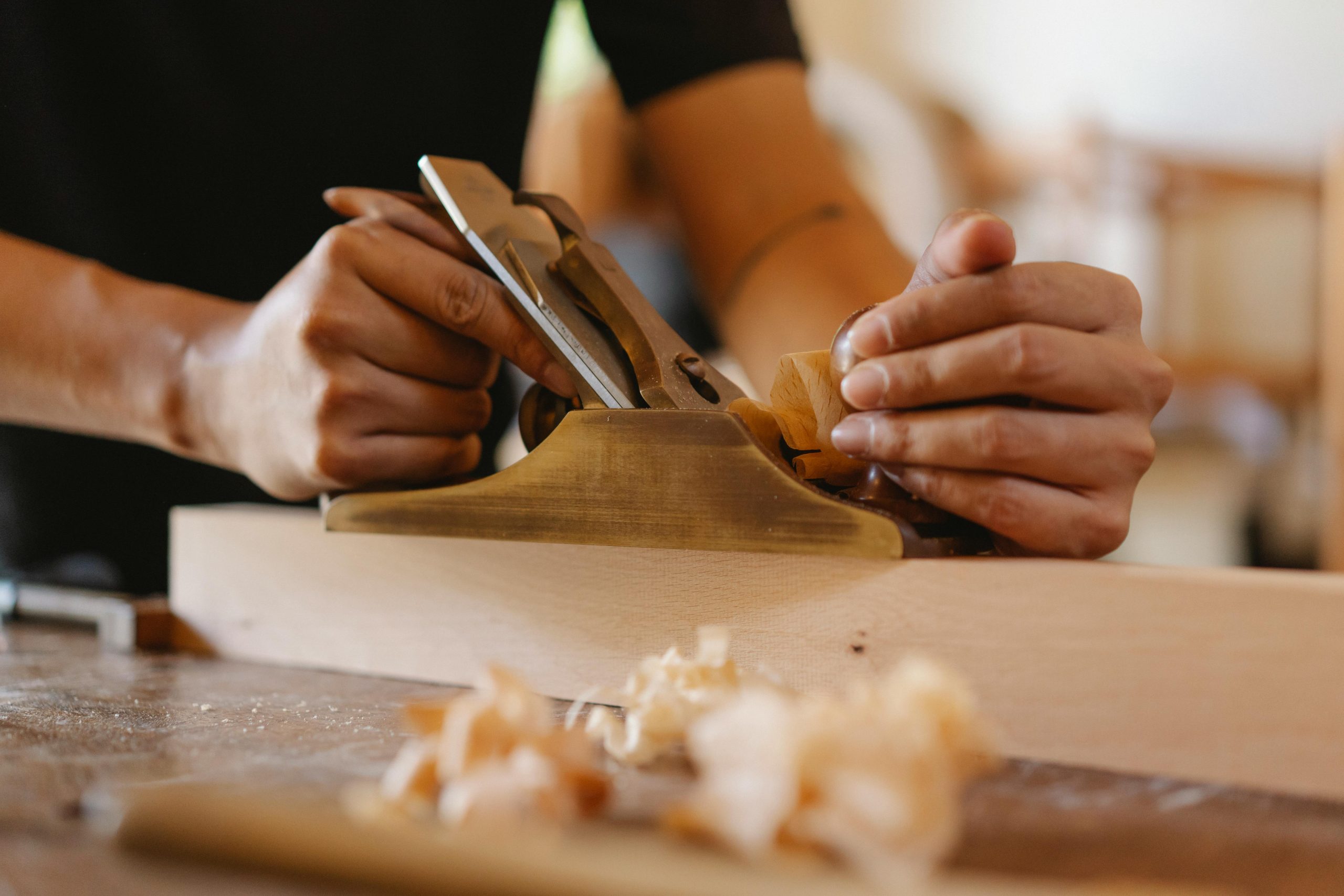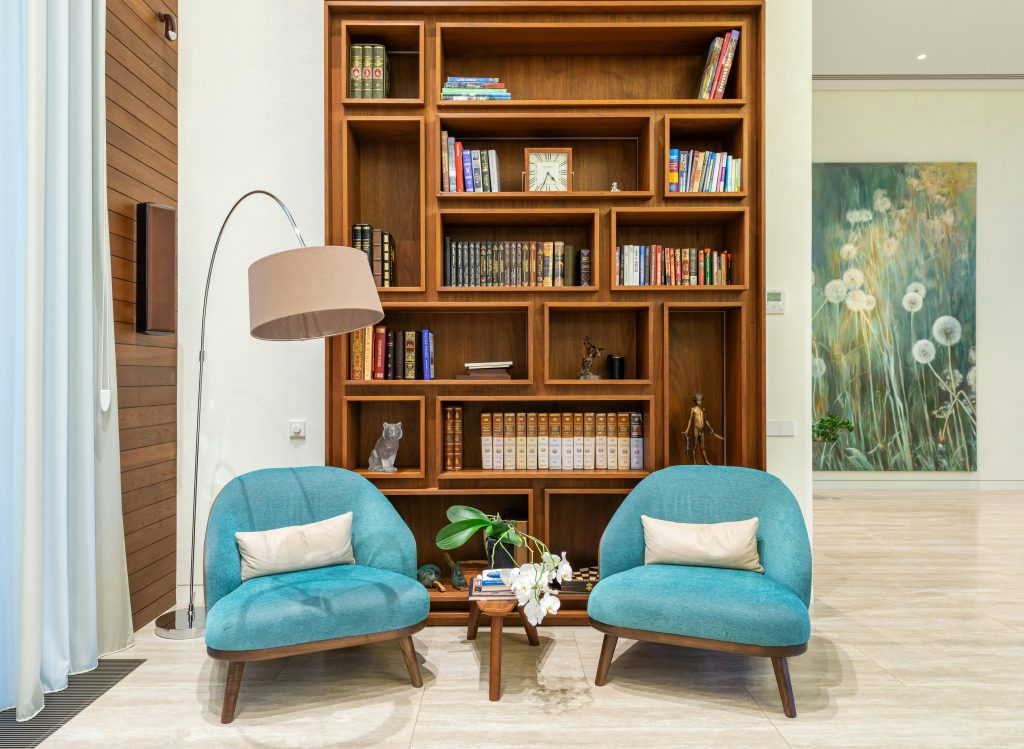Highlights:
- Planning is crucial: Measure your space carefully, decide on the number of shelves, and sketch a diagram before cutting any wood.
- Choose the right materials: Select wood based on durability, weight capacity, and finish preferences—softwood, hardwood, plywood, or MDF.
- Prepare and organize lumber: Cut all pieces accurately, drill pocket holes, label components, and sand edges before assembly.
- Assemble step by step: Attach shelves to one side panel first, then add the second side panel, top frame, and toe kick, ensuring everything is level and square.
- Finishing makes a difference: Install face frames, molding, fill holes, sand, and apply paint or stain for a polished, professional look.
- Personalize your design: Add adjustable shelves, decorative trims, lighting, or creative finishes to make the bookshelf unique.
- Avoid common mistakes: Take time with measurements, sanding, and weight distribution to ensure durability and a clean final result.
If you’ve ever wanted a beautiful, functional bookshelf but thought it was too complicated, you’re in the right place. Building a bookshelf might seem intimidating at first, but with the right guidance, even a beginner can create something impressive. In this guide, we’ll walk you through the entire process, from planning and cutting to assembly and finishing touches. By the end, you’ll have a sturdy, stylish bookshelf tailored to your space.
Why Build Your Own Bookshelf?
Buying a bookshelf is easy, but creating your own has unique benefits:
- Perfect fit: Customize the height, width, and depth to suit your space.
- Personal style: Choose materials, finishes, and accents that match your home decor.
- Cost savings: High-quality store-bought bookshelves can be expensive; building your own is often cheaper.
- Skill development: Learn woodworking basics that can be applied to future projects.
What Materials and Tools Do You Need?
Before you start, gather all your materials and tools to make the process smoother:
Materials:
- Wood boards for side panels, shelves, and top frame (plywood or solid wood)
- Wood glue and one-and-a-quarter-inch screws
- Pocket hole plugs and wood filler
- Sandpaper (120-220 grit)
- Paint, stain, or sealant
- Face frame and molding pieces
- Back panel (painted, stained, or decorative wallpapered)
- Toe kick (optional for style)
Tools:
- Saw (circular saw, miter saw, or hand saw)
- Drill with drill bits
- Pocket hole jig and clamps
- Brad nailer or hammer
- Measuring tape and square
- Rubber mallet
Choosing the Right Wood for Your Bookshelf

Selecting the right type of wood is essential for durability, appearance, and budget. Here’s what you need to know:
- Softwood vs. Hardwood: Softwoods like pine are easier to cut and budget-friendly but may dent easily. Hardwoods like oak, maple, or birch are more durable but cost more and require extra effort to work with.
- Plywood: A popular choice for DIY bookshelves because it’s stable, affordable, and available in large sheets. Look for furniture-grade plywood for a smooth surface.
- MDF (Medium-Density Fiberboard): Great for painted finishes and molding, but it’s heavy and less durable than solid wood. Avoid using MDF for very tall or heavily loaded shelves.
- Appearance and Finish: Consider whether you want a natural wood look or a painted finish. The type of wood affects how stains and paints adhere.
- Weight Considerations: Heavier books require sturdier boards. Solid wood or thick plywood shelves are recommended for a full library.
Choosing the right wood upfront prevents problems like sagging shelves or difficulty in finishing later.
How to Plan Your Bookshelf
Planning is the most critical step in a successful bookshelf project. Taking the time to map out every detail ensures your finished piece is both functional and stylish. Consider the following:
- Where will the bookshelf go? Measure the wall space carefully, including width, height, and depth. Don’t forget to account for baseboards, nearby furniture, and any electrical outlets. If it’s freestanding, measure from floor to ceiling to ensure it won’t feel cramped.
- How many shelves do you want? Think about what you plan to store. Will it be mainly books, decorative pieces, or a combination? Keep in mind that heavier items need thicker shelves or closer spacing for support.
- What is your preferred style? Decide if you want a minimalist bookshelf with clean lines, a modern piece with open shelving, or a classic style with molding and decorative trim. This will affect both materials and finishing choices.
- Will it be freestanding or built-in? Freestanding shelves are flexible and movable, while built-ins provide a more polished, integrated look but require precise measurements and may need wall anchoring.
After answering these questions, sketch a simple diagram of your bookshelf. Include dimensions for side panels, shelves, top frame, toe kick, molding, and any other details. Label each piece clearly so you don’t get confused during assembly. Consider noting where pocket holes, screws, and brackets will go.
How to Build a Bookshelf Step by Step
Step 1: Prepare the Lumber
Cutting and preparing your wood pieces accurately is key to a strong, stable bookshelf. For a standard six-foot bookshelf, you will need:
- Two side panels
- Five shelves
- One top frame
- Toe kick (optional, but adds style and stability)
- Face frames and molding
Tips for preparing your lumber:
- Use a measuring tape and square to mark exact cutting lines. Accuracy here makes assembly easier.
- Drill pocket holes at the corners of each shelf before assembly. Make sure your drill depth matches the wood thickness to avoid splitting.
- Label every piece immediately after cutting. Marking the top, bottom, front, and back helps prevent confusion later.
- Sand the edges lightly before assembly to remove splinters.
Step 2: Assemble the Bookshelf
Attach the First Side Panel and Shelves
- Lay one side panel flat on a stable surface. Use a pencil and square to mark shelf locations.
- Apply wood glue along the edges of the top frame and attach it to the side panel with nails. Ensure it is flush and square.
- Add each shelf one at a time, applying glue and securing with screws. Make sure each shelf is level before moving to the next.
- Use clamps to hold pieces steady while screws are driven in.
Attach the Second Side Panel
- Apply wood glue to the open edges of the top frame and shelves.
- Carefully position the second side panel and clamp it in place.
- Insert screws into the pocket holes to secure each shelf to the second panel. Double-check that all shelves remain level and the structure is square.
Install the Toe Kick
- Drill pocket holes in the sides of the toe kick.
- Position it beneath the bookshelf and tap lightly with a rubber mallet for a snug fit.
- Secure it with screws to improve both stability and style.
Step 3: Add the Finishing Touches
Install Face Frames
- Attach one-by-two face frames to the front edges of your bookshelf using wood glue and clamps.
- Nail the frames in place. The face frame should slightly overlap the side panels to create a clean, professional appearance.
Add Molding
- Trim the top edges and shelves with molding to add visual interest and a finished look.
- Use 45-degree miter cuts at corners to create clean, seamless angles.
- Choose wood molding for a stained finish or MDF molding if you plan to paint.
Conceal Visible Holes
- Fill pocket holes with glue-covered plugs.
- Apply wood filler to any nail holes, smoothing the surface to prepare for finishing.
Sand and Finish
- Sand the entire bookshelf with fine-grit sandpaper (220 grit) after the glue and filler have dried.
- Wipe away dust with a damp cloth.
- Apply paint or stain in even strokes. Multiple coats may be necessary for a consistent, professional finish.
Attach the Back Panel
- Paint, stain, or wallpaper the back panel before attaching it. A contrasting color or patterned panel can make your bookshelf a visual focal point.
- Nail the back panel in place, which also adds stability to the structure.
Styling and Personalization Tips
- Add adjustable shelves: Drill multiple holes along the side panels so shelves can be repositioned as needed.
- Incorporate lighting: LED strips or puck lights can highlight books and decor.
- Decorative accents: Add trim, brackets, or molding to enhance style.
- Mix storage types: Combine open shelving with drawers or cubbies for extra functionality.
- Personal touches: Paint interior shelves in bold colors, line shelves with wallpaper, or add decorative paper for a unique look.
How to Keep Your Bookshelf Looking Great
- Dust regularly to prevent buildup.
- Avoid prolonged exposure to direct sunlight, which can fade wood or finishes.
- Don’t overload shelves; distribute heavy items evenly.
- Use mats under decorative pieces to prevent scratches and dents.
Common Mistakes to Avoid
- Skipping measurements: Even minor errors can make assembly frustrating.
- Rushing assembly: Take your time to align and clamp all pieces properly.
- Neglecting weight distribution: Use thicker boards or additional support for heavy books.
- Skipping sanding: Rough edges look unprofessional and may splinter.
How Long Will It Take?
For beginners, expect to spend a full weekend or two afternoons completing the project. Cutting and assembly are faster than finishing, but don’t rush the sanding, painting, or staining steps—they make the difference between a good and a professional-looking piece.
Why Building a Bookshelf Is Worth It
Building your own bookshelf provides more than just storage. You gain:
- A custom piece tailored to your space and style.
- A rewarding sense of accomplishment.
- Practical woodworking skills for future projects.
- A statement piece that reflects your creativity and personal touch.
Tips for First-Time Builders
- Start with a simple design to build confidence.
- Study tutorials or guides to understand tricky steps.
- Ask a friend or family member to help with lifting or alignment.
- Keep all tools and materials organized before starting.
- Celebrate progress at each stage to maintain motivation.
Where to Find Inspiration
Before starting, browse:
- Pinterest or Instagram for design ideas.
- DIY blogs and YouTube channels for tutorials.
- Furniture stores to see different styles and proportions.
Seeing what works and what doesn’t helps refine your plan and ensures your bookshelf fits your space perfectly.
Final Thoughts
Building a bookshelf may seem daunting at first, but it’s a manageable project even for beginners. By planning carefully, taking your time with measurements, and following these step-by-step instructions, you can create a piece that is both functional and stylish. Once your bookshelf is complete, you’ll have the satisfaction of knowing you made it yourself—and that’s something no store-bought piece can offer.

